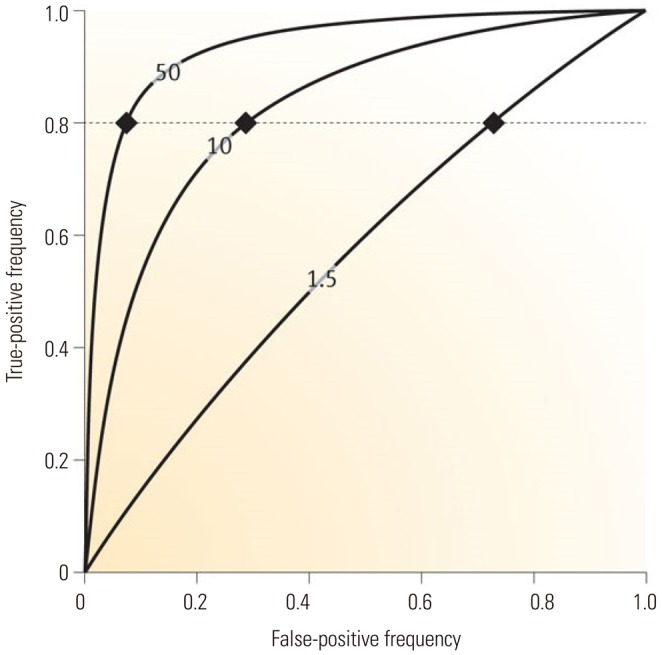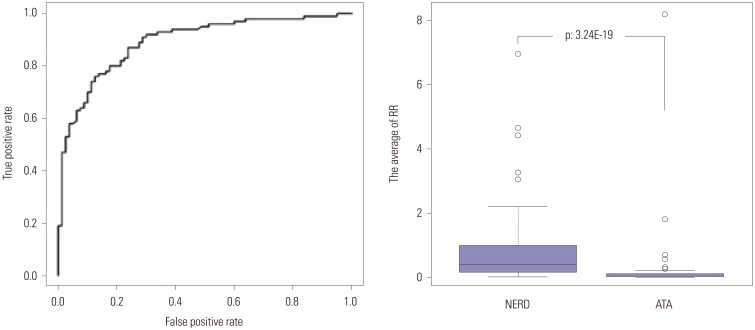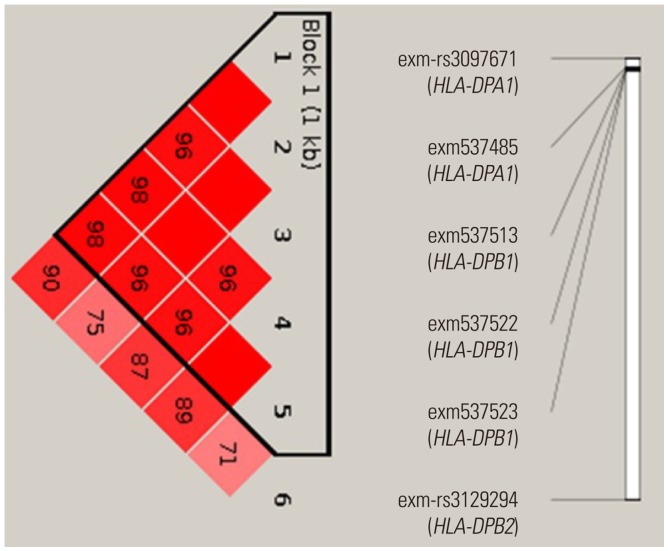Yonsei Med J.
2019 Jan;60(1):1-9. 10.3349/ymj.2019.60.1.1.
Clinical Implications of Single Nucleotide Polymorphisms in Diagnosis of Asthma and its Subtypes
- Affiliations
-
- 1Division of Allergy and Respiratory Medicine, Department of Internal Medicine, Soonchunhyang University Bucheon Hospital, Bucheon, Korea.
- 2Department of Interdisciplinary Program in Biomedical Science, Graduate School, Soonchunhyang University, Bucheon, Korea. hschang@sch.ac.kr
- KMID: 2428272
- DOI: http://doi.org/10.3349/ymj.2019.60.1.1
Abstract
- For the past three decades, a large number of genetic studies have been performed to examine genetic variants associated with asthma and its subtypes in hopes of gaining better understanding of the mechanisms underlying disease pathology and to identify genetic biomarkers predictive of disease outcomes. Various methods have been used to achieve these objectives, including linkage analysis, candidate gene polymorphism analysis, and genome-wide association studies (GWAS); however, the degree to which genetic variants contribute to asthma pathogenesis has proven to be much less significant than originally expected. Subsequent application of GWAS to well-defined phenotypes, such as occupational asthma and non-steroidal anti-inflammatory drugexacerbated respiratory diseases, has overcome some of these limitations, although with only partial success. Recently, a combinatorial analysis of single nucleotide polymorphisms (SNPs) identified by GWAS has been used to develop sets of genetic markers able to more accurately stratify asthma subtypes. In this review, we discuss the implications of the identified SNPs in diagnosis of asthma and its subtypes and the progress being made in combinatorial analysis of genetic variants.
Keyword
MeSH Terms
-
Anti-Inflammatory Agents, Non-Steroidal
Aspirin
Asthma*
Asthma, Occupational
Biomarkers
Diagnosis*
Genetic Association Studies
Genetic Markers
Genetic Techniques
Genome-Wide Association Study
Hope
Pathology
Phenotype
Polymorphism, Single Nucleotide*
Anti-Inflammatory Agents, Non-Steroidal
Aspirin
Biomarkers
Genetic Markers
Figure
Cited by 1 articles
-
Complementary Participation of Genetics and Epigenetics in Development of NSAID-exacerbated Respiratory Disease
Jong-Uk Lee, Jong Sook Park, Hun Soo Chang, Choon-Sik Park
Allergy Asthma Immunol Res. 2019;11(6):779-794. doi: 10.4168/aair.2019.11.6.779.
Reference
-
1. Edfors-Lubs ML. Allergy in 7000 twin pairs. Acta Allergol. 1971; 26:249–285. PMID: 4255830.
Article2. Van Eerdewegh P, Little RD, Dupuis J, Del Mastro RG, Falls K, Simon J, et al. Association of the ADAM33 gene with asthma and bronchial hyperresponsiveness. Nature. 2002; 418:426–430. PMID: 12110844.
Article3. Allen M, Heinzmann A, Noguchi E, Abecasis G, Broxholme J, Ponting CP, et al. Positional cloning of a novel gene influencing asthma from chromosome 2q14. Nat Genet. 2003; 35:258–263. PMID: 14566338.
Article4. Zhang Y, Leaves NI, Anderson GG, Ponting CP, Broxholme J, Holt R, et al. Positional cloning of a quantitative trait locus on chromosome 13q14 that influences immunoglobulin E levels and asthma. Nat Genet. 2003; 34:181–186. PMID: 12754510.
Article5. Laitinen T, Polvi A, Rydman P, Vendelin J, Pulkkinen V, Salmikangas P, et al. Characterization of a common susceptibility locus for asthma-related traits. Science. 2004; 304:300–304. PMID: 15073379.
Article6. Oguma T, Palmer LJ, Birben E, Sonna LA, Asano K, Lilly CM. Role of prostanoid DP receptor variants in susceptibility to asthma. N Engl J Med. 2004; 351:1752–1763. PMID: 15496624.
Article7. Hardy J, Singleton A. Genomewide association studies and human disease. N Engl J Med. 2009; 360:1759–1768. PMID: 19369657.
Article8. Moffatt MF, Gut IG, Demenais F, Strachan DP, Bouzigon E, Heath S, et al. A large-scale, consortium-based genomewide association study of asthma. N Engl J Med. 2010; 363:1211–1221. PMID: 20860503.
Article9. Manolio TA, Collins FS, Cox NJ, Goldstein DB, Hindorff LA, Hunter DJ, et al. Finding the missing heritability of complex diseases. Nature. 2009; 461:747–753. PMID: 19812666.
Article10. 1000 Genomes Project Consortium. Abecasis GR, Altshuler D, Auton A, Brooks LD, Durbin RM, Gibbs RA, et al. A map of human genome variation from population-scale sequencing. Nature. 2010; 467:1061–1073. PMID: 20981092.
Article11. Igartua C, Myers RA, Mathias RA, Pino-Yanes M, Eng C, Graves PE, et al. Ethnic-specific associations of rare and low-frequency DNA sequence variants with asthma. Nat Commun. 2015; 6:5965. PMID: 25591454.
Article12. Green RH, Brightling CE, Bradding P. The reclassification of asthma based on subphenotypes. Curr Opin Allergy Clin Immunol. 2007; 7:43–50. PMID: 17218810.
Article13. Lee SH, Park JS, Park CS. The search for genetic variants and epigenetics related to asthma. Allergy Asthma Immunol Res. 2011; 3:236–244. PMID: 21966603.
Article14. Moore WC, Meyers DA, Wenzel SE, Teague WG, Li H, Li X, et al. Identification of asthma phenotypes using cluster analysis in the Severe Asthma Research Program. Am J Respir Crit Care Med. 2010; 181:315–323. PMID: 19892860.
Article15. Jang AS, Kwon HS, Cho YS, Bae YJ, Kim TB, Park JS, et al. Identification of subtypes of refractory asthma in Korean patients by cluster analysis. Lung. 2013; 191:87–93. PMID: 23143671.
Article16. Lee JH, Lee HS, Park MR, Lee SW, Kim EH, Cho JB, et al. Relationship between indoor air pollutant levels and residential environment in children with atopic dermatitis. Allergy Asthma Immunol Res. 2014; 6:517–524. PMID: 25374751.
Article17. Jeong I, Kim I, Park HJ, Roh J, Park JW, Lee JH. Allergic diseases and multiple chemical sensitivity in Korean adults. Allergy Asthma Immunol Res. 2014; 6:409–414. PMID: 25228997.
Article18. Hur GY, Ye YM, Koh DH, Kim SH, Park HS. IL-4 receptor α polymorphisms may be a susceptible factor for work-related respiratory symptoms in bakery workers. Allergy Asthma Immunol Res. 2013; 5:371–376. PMID: 24179683.
Article19. Kim SH, Sutherland ER, Gelfand EW. Is there a link between obesity and asthma? Allergy Asthma Immunol Res. 2014; 6:189–195. PMID: 24843792.
Article20. Lee SY, Kang MJ, Kwon JW, Park KS, Hong SJ. Breastfeeding might have protective effects on atopy in children with the CD14C-159T CT/CC genotype. Allergy Asthma Immunol Res. 2013; 5:239–241. PMID: 23814678.
Article21. Huiyan W, Yuhe G, Juan W, Junyan Z, Shan W, Xiaojun Z, et al. The importance of allergen avoidance in high risk infants and sensitized patients: a meta-analysis study. Allergy Asthma Immunol Res. 2014; 6:525–534. PMID: 25374752.
Article22. Peden D, Reed CE. Environmental and occupational allergies. J Allergy Clin Immunol. 2010; 125(2 Suppl 2):S150–S160. PMID: 20176257.
Article23. von Mutius E. Gene-environment interactions in asthma. J Allergy Clin Immunol. 2009; 123:3–11. PMID: 19130922.
Article24. Park HJ, Lim HS, Park KH, Lee JH, Park JW, Hong CS. Changes in allergen sensitization over the last 30 years in Korea respiratory allergic patients: a single-center. Allergy Asthma Immunol Res. 2014; 6:434–443. PMID: 25229001.
Article25. Kim SH, Cho BY, Park CS, Shin ES, Cho EY, Yang EM, et al. Alpha-T-catenin (CTNNA3) gene was identified as a risk variant for toluene diisocyanate-induced asthma by genome-wide association analysis. Clin Exp Allergy. 2009; 39:203–212. PMID: 19187332.
Article26. Bernstein DI, Kashon M, Lummus ZL, Johnson VJ, Fluharty K, Gautrin D, et al. CTNNA3 (α-catenin) gene variants are associated with diisocyanate asthma: a replication study in a Caucasian worker population. Toxicol Sci. 2013; 131:242–246. PMID: 22977168.
Article27. Park SM, Park JS, Park HS, Park CS. Unraveling the genetic basis of aspirin hypersensitivity in asthma beyond arachidonate pathways. Allergy Asthma Immunol Res. 2013; 5:258–276. PMID: 24003382.
Article28. Park BL, Kim TH, Kim JH, Bae JS, Pasaje CF, Cheong HS, et al. Genome-wide association study of aspirin-exacerbated respiratory disease in a Korean population. Hum Genet. 2013; 132:313–321. PMID: 23180272.
Article29. Steyerberg EW, Vickers AJ, Cook NR, Gerds T, Gonen M, Obuchowski N, et al. Assessing the performance of prediction models: a framework for traditional and novel measures. Epidemiology. 2010; 21:128–138. PMID: 20010215.30. Jakobsdottir J, Gorin MB, Conley YP, Ferrell RE, Weeks DE. Interpretation of genetic association studies: markers with replicated highly significant odds ratios may be poor classifiers. PLoS Genet. 2009; 5:e1000337. PMID: 19197355.
Article31. Kim JH, Park BL, Cheong HS, Bae JS, Park JS, Jang AS, et al. Genome-wide and follow-up studies identify CEP68 gene variants associated with risk of aspirin-intolerant asthma. PLoS One. 2010; 5:e13818. PMID: 21072201.
Article32. Chang HS, Park JS, Jang AS, Park SW, Uh ST, Kim YH, et al. Diagnostic value of clinical parameters in the prediction of aspirin-exacerbated respiratory disease in asthma. Allergy Asthma Immunol Res. 2011; 3:256–264. PMID: 21966606.
Article33. Wei WH, Hemani G, Haley CS. Detecting epistasis in human complex traits. Nat Rev Genet. 2014; 15:722–733. PMID: 25200660.
Article34. Shin SW, Park J, Kim YJ, Uh ST, Choi BW, Kim MK, et al. A highly sensitive and specific genetic marker to diagnose aspirin-exacerbated respiratory disease using a genome-wide association study. DNA Cell Biol. 2012; 31:1604–1609. PMID: 22994212.
Article35. McCarthy MI, Hirschhorn JN. Genome-wide association studies: potential next steps on a genetic journey. Hum Mol Genet. 2008; 17:R156–R165. PMID: 18852205.
Article36. Shin SW, Park BL, Chang H, Park JS, Bae DJ, Song HJ, et al. Exonic variants associated with development of aspirin exacerbated respiratory diseases. PLoS One. 2014; 9:e111887. PMID: 25372592.
Article37. Chang HS, Shin SW, Lee TH, Bae DJ, Park JS, Kim YH, et al. Development of a genetic marker set to diagnose aspirin-exacerbated respiratory disease in a genome-wide association study. Pharmacogenomics J. 2015; 15:316–321. PMID: 25707394.
Article38. Gyenesei A, Moody J, Laiho A, Semple CA, Haley CS, Wei WH. Bi-Force Toolbox: powerful high-throughput computational analysis of gene-gene interactions in genome-wide association studies. Nucleic Acids Res. 2012; 40:W628–W632. PMID: 22689639.
Article39. Zuk O, Hechter E, Sunyaev SR, Lander ES. The mystery of missing heritability: Genetic interactions create phantom heritability. Proc Natl Acad Sci U S A. 2012; 109:1193–1198. PMID: 22223662.
Article40. Wei WH, Hemani G, Gyenesei A, Vitart V, Navarro P, Hayward C, et al. Genome-wide analysis of epistasis in body mass index using multiple human populations. Eur J Hum Genet. 2012; 20:857–862. PMID: 22333899.
Article
- Full Text Links
- Actions
-
Cited
- CITED
-
- Close
- Share
- Similar articles
-
- Eosinophilic Bronchitis, Eosinophilia Associated Genetic Variants, and Notch Signaling in Asthma
- Gene - Gene Interactions Among MCP Genes Polymorphisms in Asthma
- Role of Prostaglandin D2 in the Pathogenesis of Asthma
- Identifying Polymorphisms in IL-31 and Their Association with Susceptibility to Asthma
- Association Study between Asthma Severity and Single Nucleotide Polymorphisms of Fibroblast Growth Factor 2




